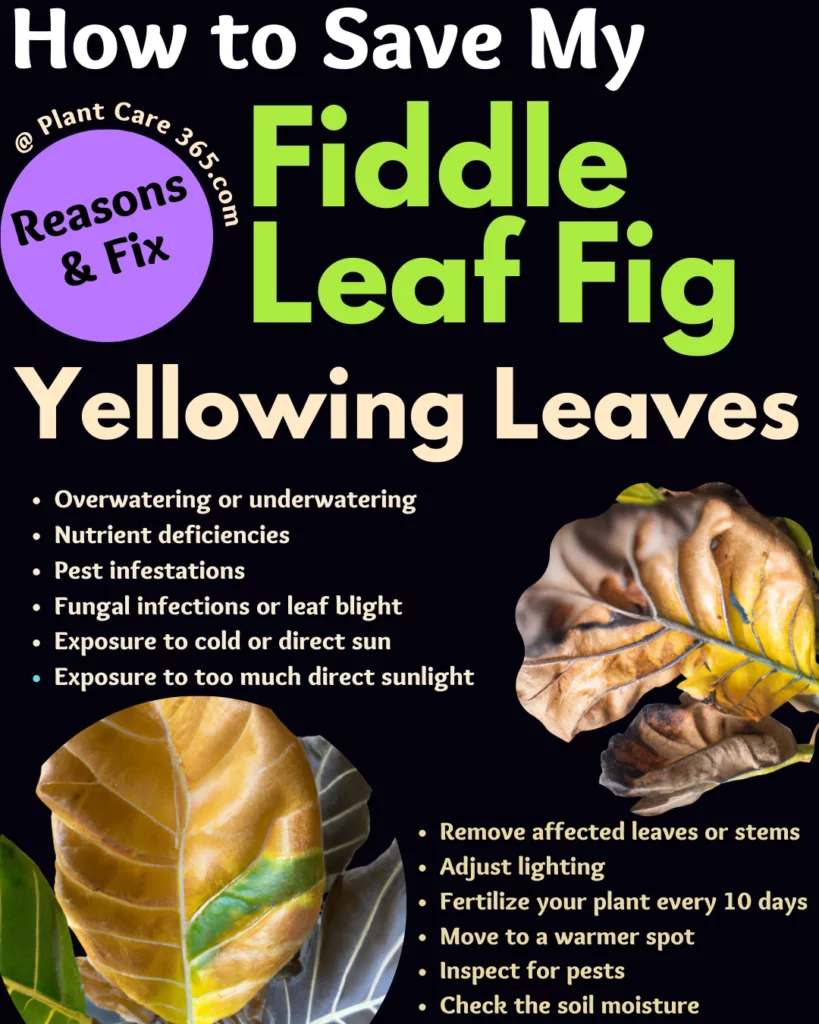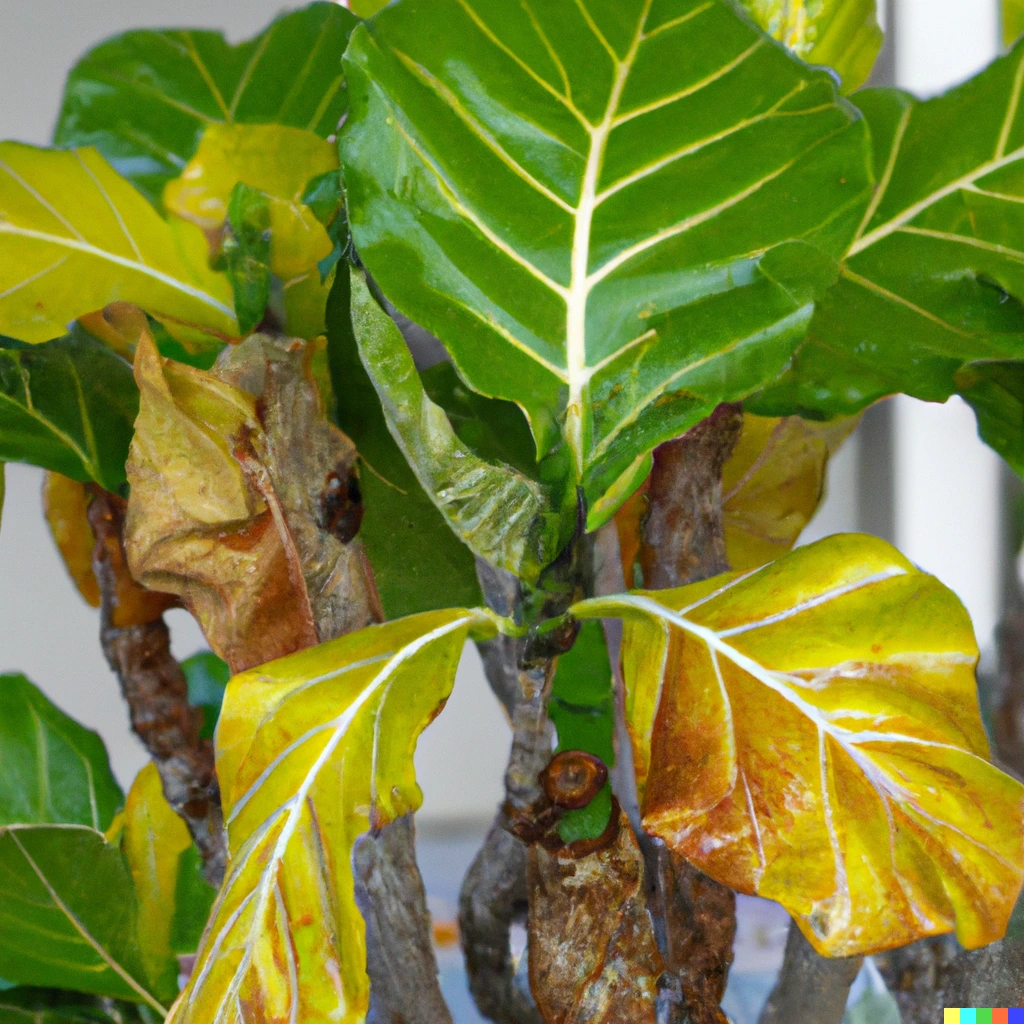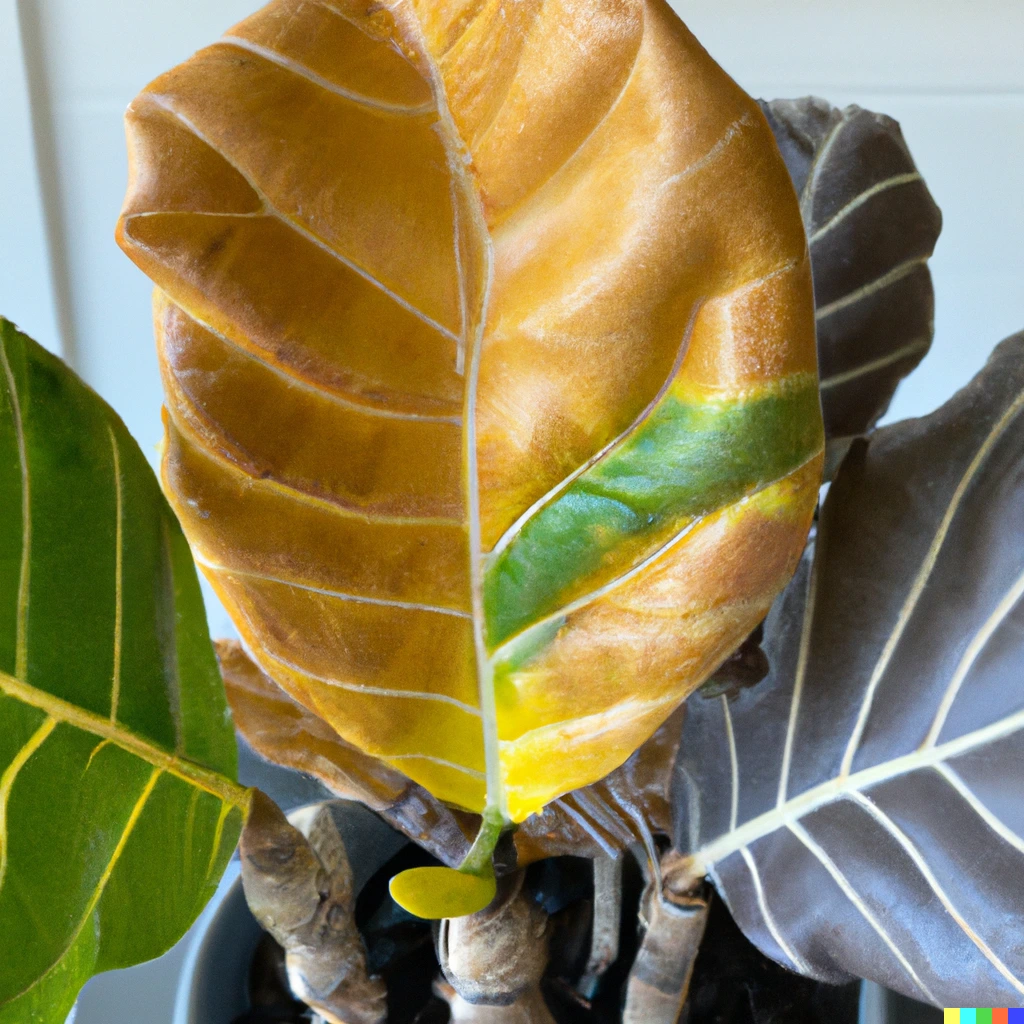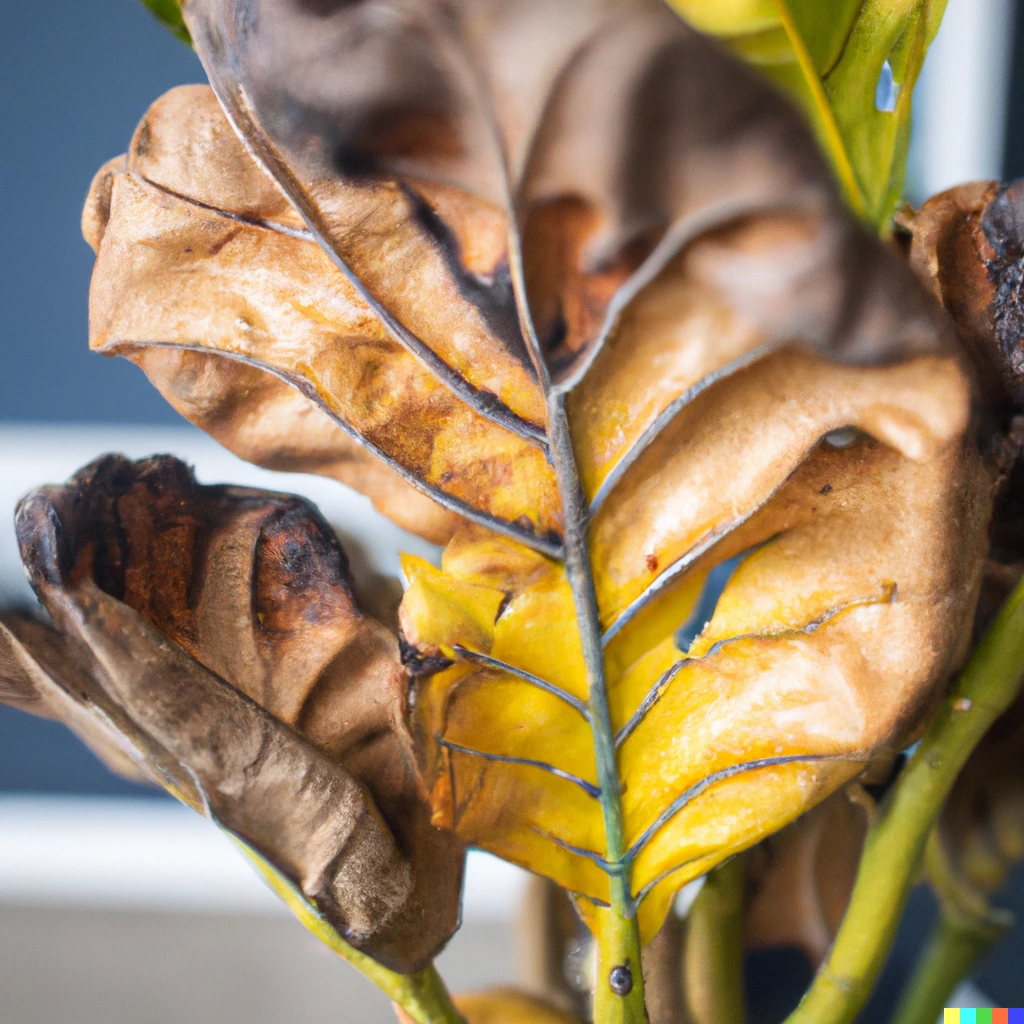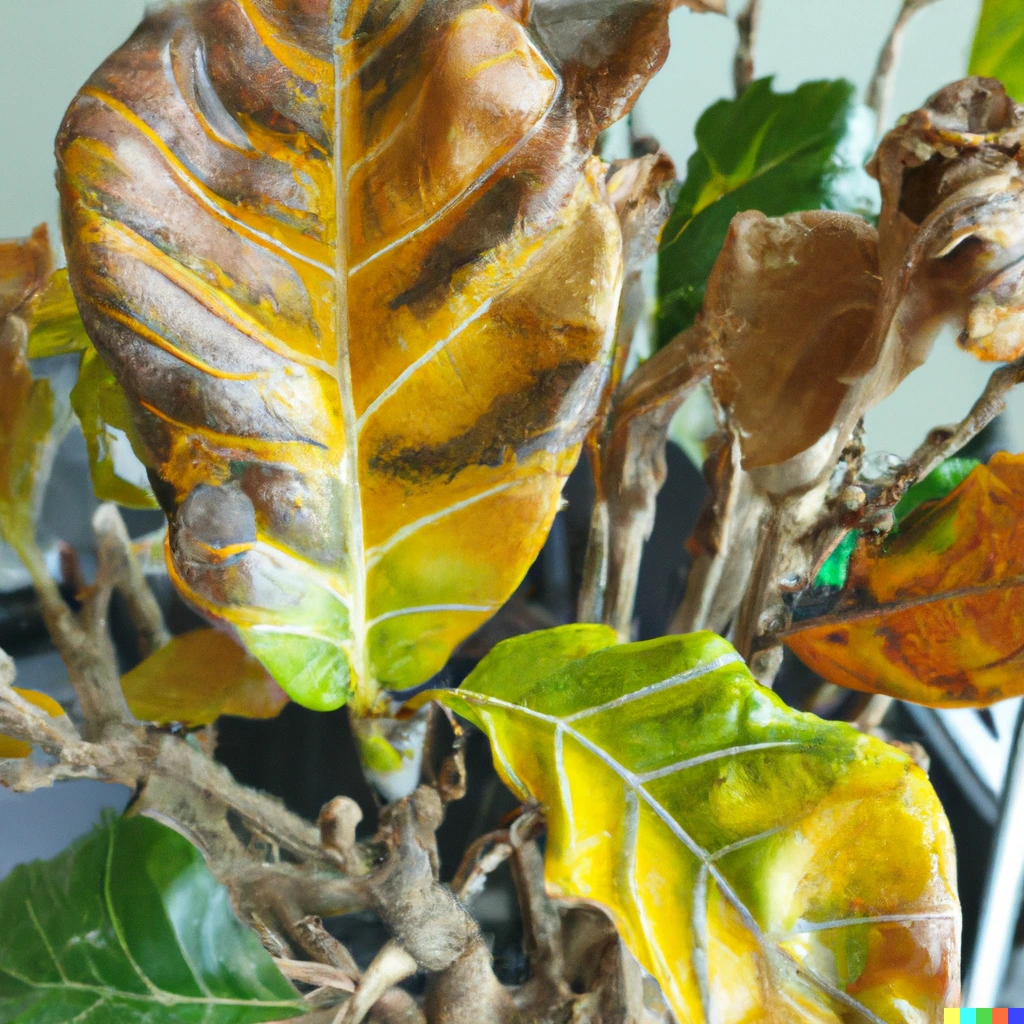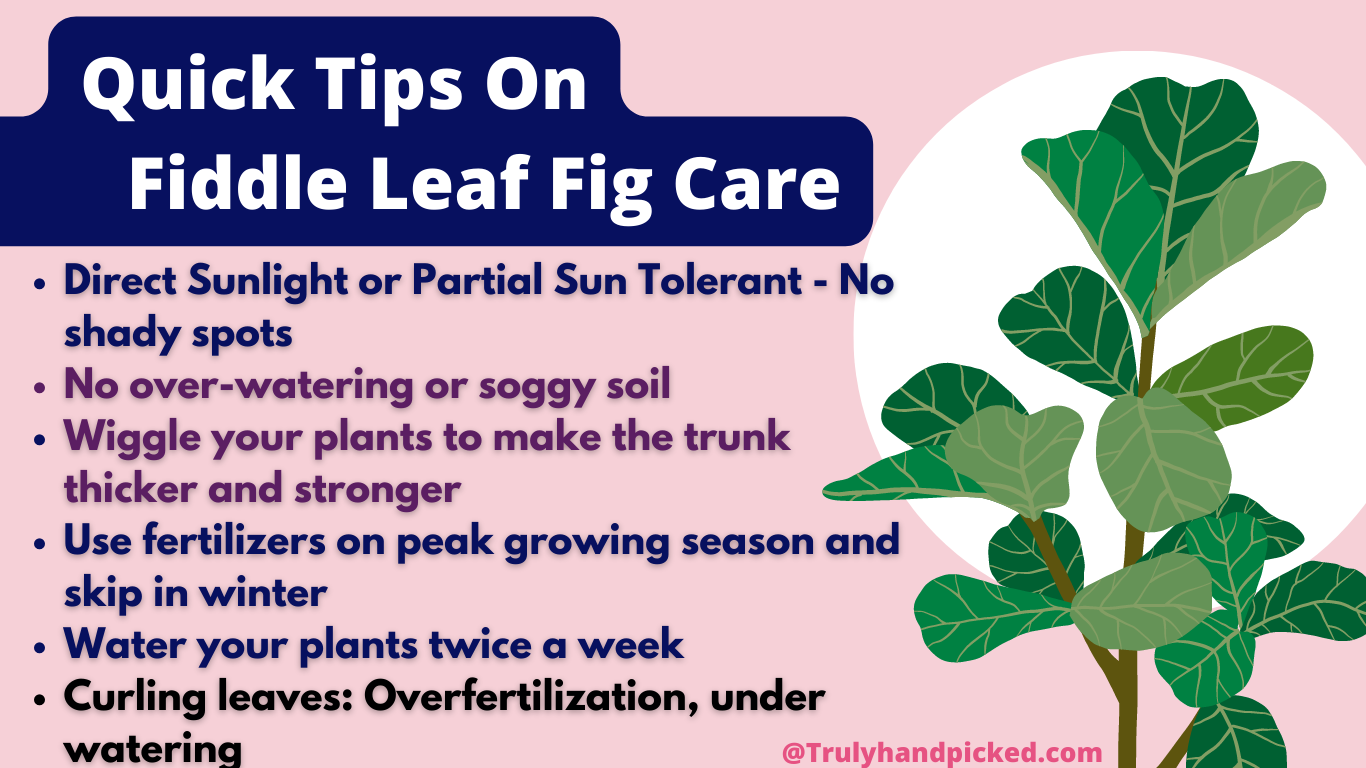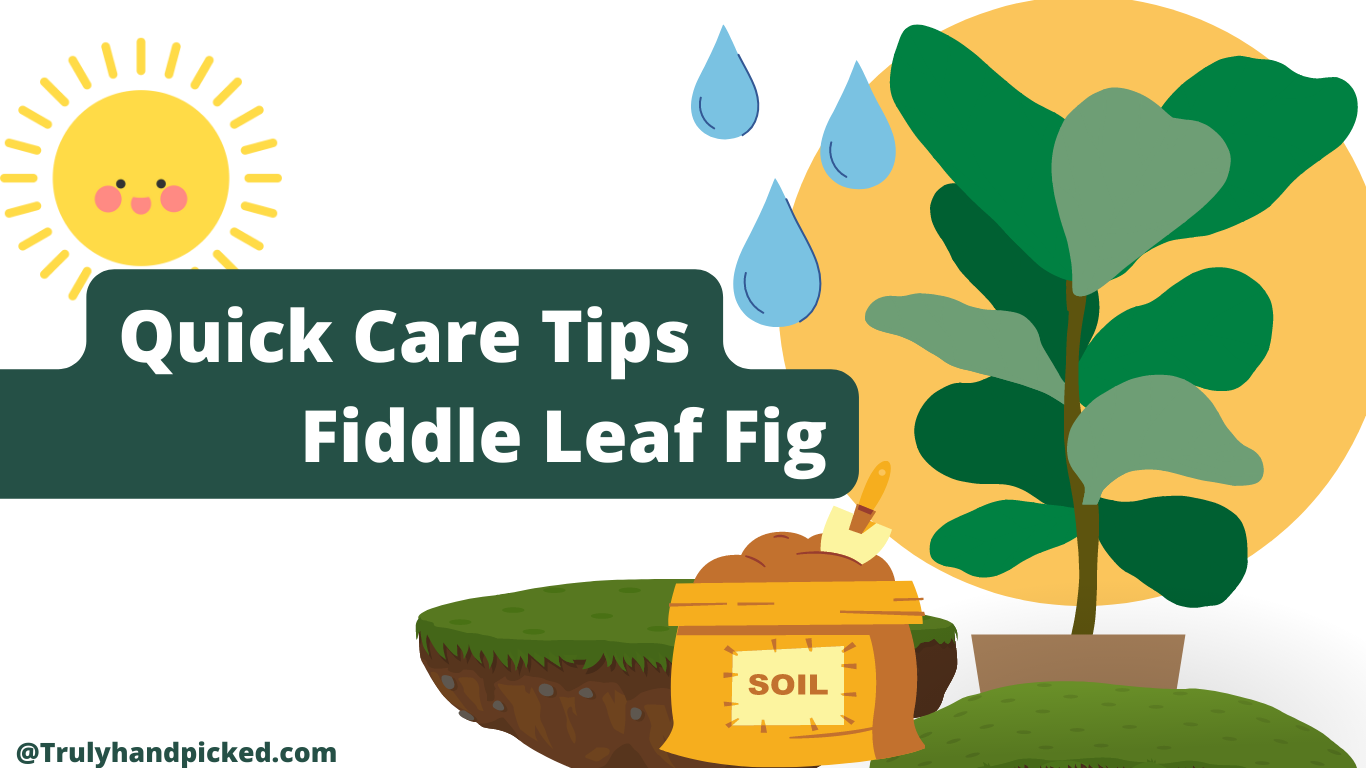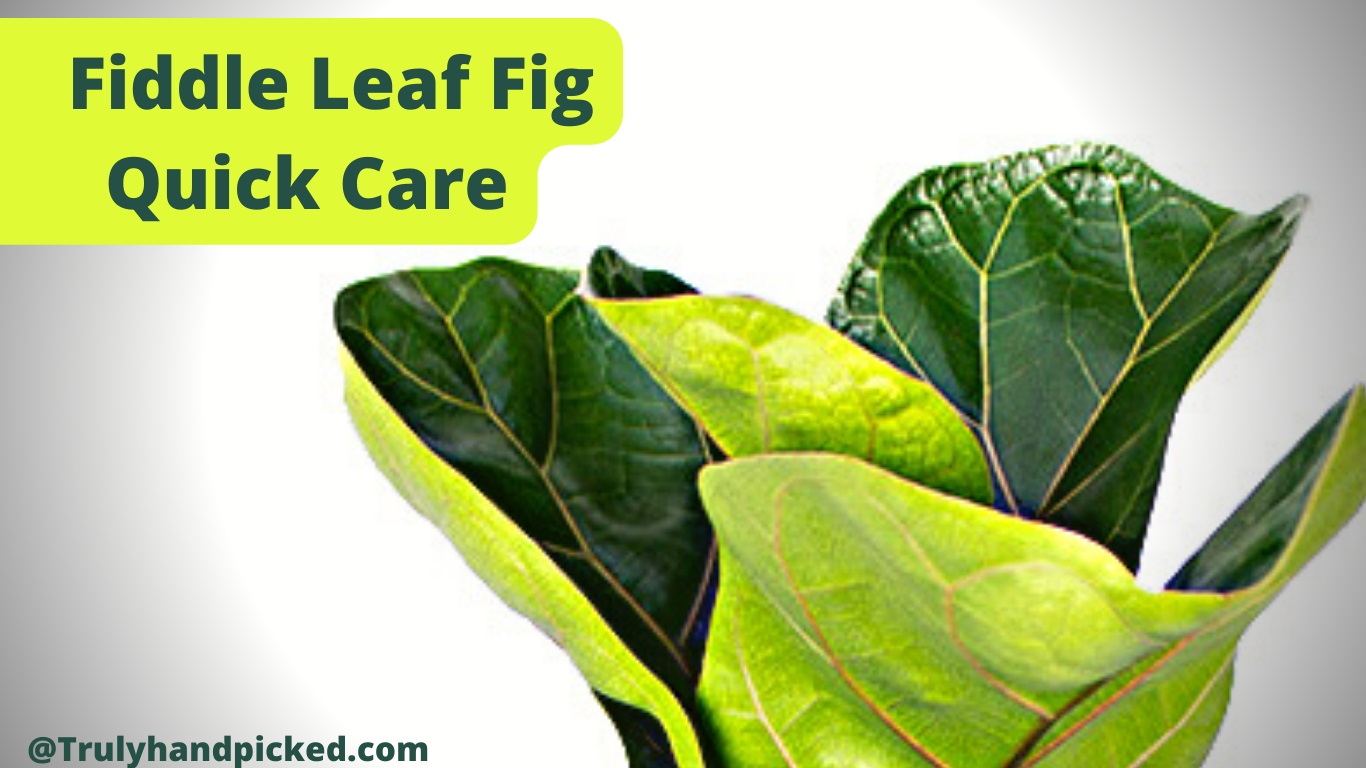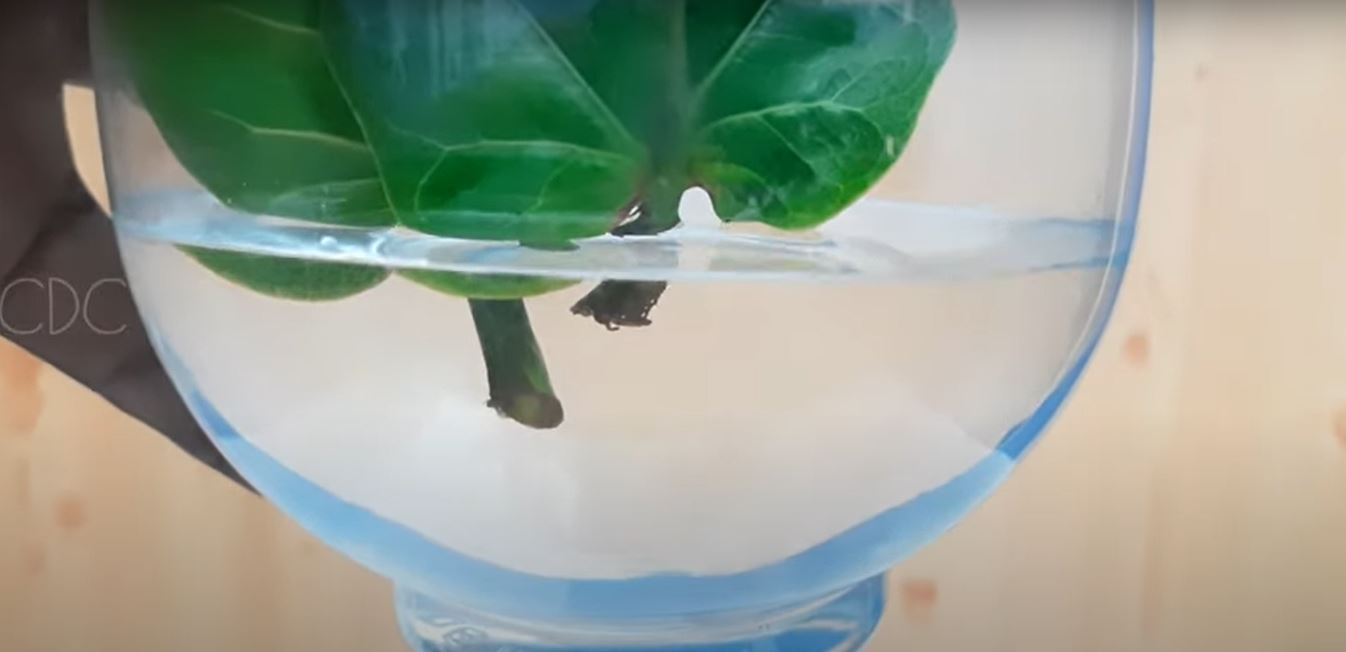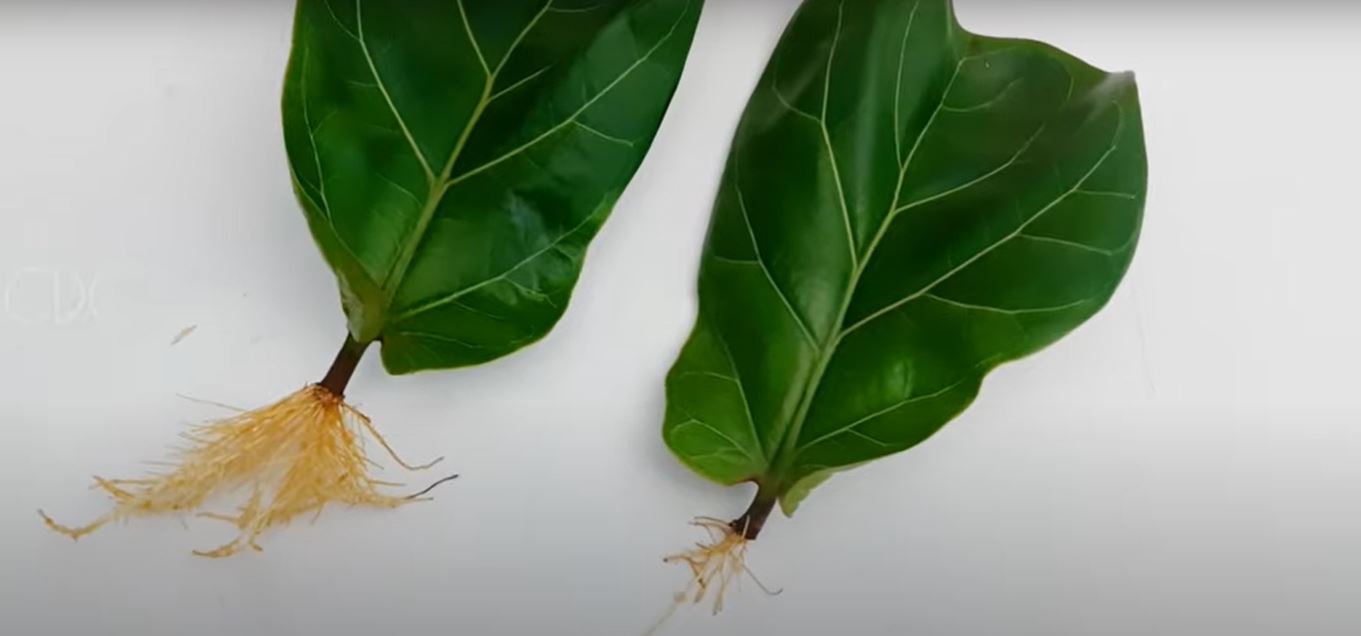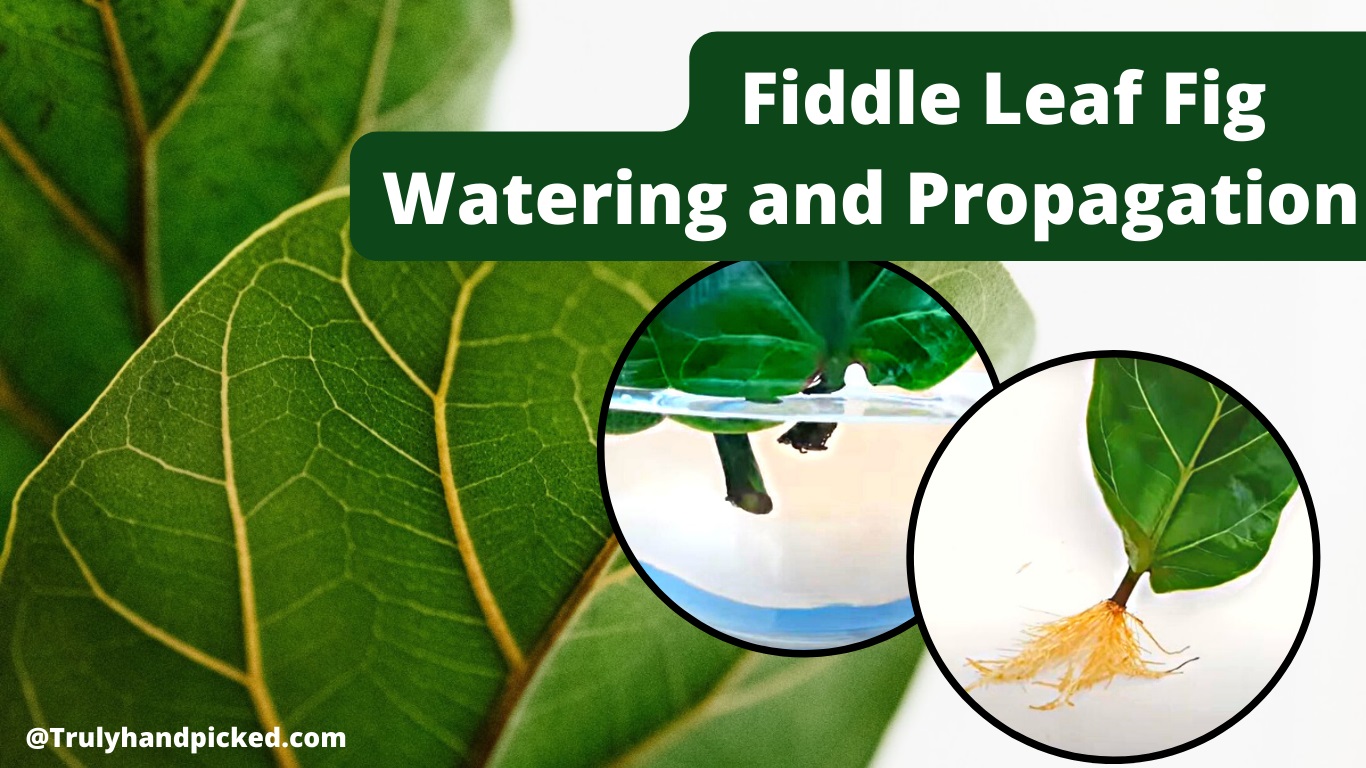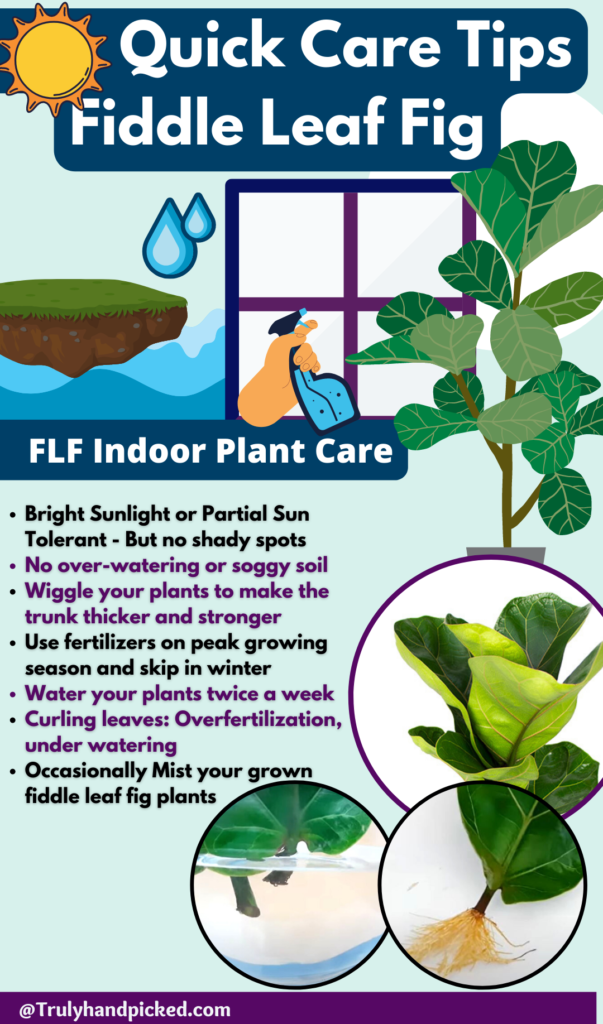If you don’t mind spending money on buying expensive houseplants, then, fiddle leaf fig is the best pick for you. A fiddle leaf fig plant can add a splash of nature to your place with its incredibly classy look.
Growing and taking care of a healthy fiddle leaf fig plant is not easy like other normal houseplants.
But the beauty it pauses with its every part is just totally worth that t labor of caring. If you are a fiddle leaf fig fan, learn some quick tips on care, watering, and propagation-
Reasons and Fix for Fiddle Leaf Turning Yellow
Fiddle leaf figs, also known as Ficus lyrata, are a popular houseplant known for their large, glossy leaves. However, sometimes the leaves of a fiddle leaf fig can turn yellow, which can be a cause for concern for plant owners.
Yellowing leaves can be a sign of a variety of issues, including overwatering, nutrient deficiencies, pest infestations, or disease.
If your fiddle leaf fig’s leaves are turning yellow, it’s important to identify the cause in order to take the appropriate steps to help your plant recover.
Related: Philodendron leaves turning yellow
Reasons why plant leaves are yellow?
- Overwatering or underwatering
- Nutrient deficiencies, such as a lack of iron or magnesium
- Pest infestations, such as spider mites or scale insects
- Diseases, such as fungal infections or leaf blight
- Exposure to cold temperatures
- Exposure to too much direct sunlight
How to save your Plant:
- Check the soil moisture: Avoid overcaring and overwatering. As it can cause yellowing leaves, so make sure the soil is not too wet. Conversely, if the soil is too dry, it can also cause yellowing.
- Inspect for pests: Check the leaves and stem for any signs of pests, such as spider mites, mealybugs, or scale insects. If you find any, use a pesticide or insecticide that is safe for use on houseplants to eliminate them.
- Check for disease: Look for any signs of fungal or bacterial infections, such as leaf spots or stem rot. If you find any, remove affected leaves or stems and apply a fungicide or antibiotic.
- Adjust lighting: Make sure your fiddle leaf fig is getting the right amount of light. Yellowing leaves can be a sign of too much direct sunlight or not enough bright indirect light.
- Fertilize: Fiddle leaf figs need a balanced fertilizer which can help to prevent nutrient deficiencies.
- Move to a warmer spot: If your fiddle leaf fig is exposed to cold temperatures, it may cause yellowing. Move it to a warmer spot in your house.
Related: Geranium leaves turning yellow
Quick Care Tips on Fiddle Leaf Fig
Placing Outside: You can place your fig plants outside if you live in a tropical climate. But your plants won’t be able to tolerate midday full sun, so place them in a way it is safe during noon to evening sun.
Fungal infection: Overwatering or waterlogging could be a major reason for fungal infection, root rot, and dropping leaves.
Cold climate for fiddle leaf figs: Your plants can grow well and tolerate a range from 65 – 80 but not temperature dropping below 60 or high temperatures.
Curling leaves: Leaves curling could indicate your plant is undergoing underwater, over-fertilizing, outgrown from the pot size, and low quality of the potting mix.
How to my plant leaf healthy? If the new shoot appears bigger, greenish, and shiny without spots and not many yellowing leaves, then you can be sure your plant leaves are healthy.
Make your fiddle leaf fig trunk thicken: Just wiggle, yes just wiggle your plant slowly in the early days and slowly intensify later. This makes your plant trunk grow stronger and thicker.
How to know my plant needs water? Watering once in 10 days is enough but the leaves could help you when to water. If the leaves look drooping and not upright as they should be, then it means your plant is asking you to water her.
You may also be interested indoor plants with big leaves.
Quick Overview of FLF Plants
- Soil: The soil must be loose and has a well-drained quality with a pH balance between 5.5 to 7.0
- Water: Water requirements of fiddle leaf figs vary by their height or grown length. Try to sprinkle 1 cup of water per 2 feet of the length of your houseplant.
- Fertilizer: Any all-purpose fertilizer with a 3-1-2 NPK ratio, as fiddle leaf fig plants always need nitrogen most to thrive best.
- Sunlight Requirements: Keep your plant in a spot the bright sunlight but try to provide a bit of shade during the scorching heat of the afternoon.
- Humidity: Try to maintain 30% to 65% humidity in your indoor fiddle leaf fig plant to provide it with the best climate.
- Hardiness Zones: 9 to 11
Do you love bigger and large house plants? check for quick care tips on areca palm.
Fiddle leaf figs (Ficus lyrata) prefer bright, indirect light. They will tolerate lower light levels, but they may not grow as vigorously or produce as many leaves.
Direct sunlight can scorch the leaves, so it’s best to place the plant in an area where it will receive bright light without being in direct sun for long periods of time. They like a lot of light but not direct sun.
If you’re keeping your Fiddle Leaf Fig indoors, a spot near a window that gets plenty of natural light but is protected from direct sun is ideal.
Rotating the plant every few weeks can help it receive light on all sides. If you’re keeping your Fiddle Leaf Fig outdoors, a spot that is shaded during the hottest part of the day and receives plenty of bright light the rest of the time is ideal.
Related: My dumb cane plant leaves are turning yellow
Benefits of Growing Fiddle Leaf Fig:
People, who think that we shouldn’t spend such a large sum of money on houseplants, must know the high advantages of the fiddle leaf fig plant once. Some of the commonest benefits you can get from a fiddle leaf fig are as follows-
- It works as a natural air purifier and removes unhealthy chemicals from your room while providing more oxygen to the place at the same time
- Helps to endorse physical well-being by boosting overall health and treating some mild health issues
- Fiddle leaf fig plant can treat some sensitive health issues too along with promoting physical well-being, like low BP, hyper nervous system, etc.
How to Care Fiddle Leaf Fig Perfectly:
To grow and care for a fiddle leaf fig plant like an expert gardener, needs full attention from you. You have to be vigilant about the basic needs of a fiddle leaf fig to give it the best chance to thrive. So, let’s. Watch out for the best ways to give your expensive houseplant the most excellent environment to flourish properly-
Soil and Potting Mix:
Like the utmost houseplants, the fiddle leaf fig plant likes loose type soil that drains easily. Try to prepare your soil with 1 part of coco coir, 1 part of peat moss, 1 part of perlite, and 2 parts of fully fertile garden soil. Make sure your planter and soil both have good drainage quality to get a successful outcome for your fiddle leaf fig plantation.
When and How Often to Water?
After bringing a healthy fiddle leaf fig plant from a nursery and replanting it in a planter, water it thoroughly. Wait for 4-5 days and water the soil again to keep the soil evenly moist but not water-logged ever. Fiddle leaf fig has a unique water need system, unlike other houseplants. It wants water depending on its height. Besides thorough watering, mist your grown fiddle leaf fig plant once, after every few whiles.
Also, read on how to save an overwatered peace lily.
Fertilizer Needs:
Fiddle leaf fig grabs its essential nutrients from a liquid fertilizer more quickly and a slow-release for year-round supply. Use high-nitrogen liquid fertilizer to feed your fiddle leaf fig houseplant during summer. Apply it thrice a year directly onto the base of your plant. Spring and summer are the best seasons to feed a fiddle leaf fig plant adequately.
Lighting and temperature needs:
Provide your plant with full sun and 6-7 houses of direct sunlight every day. Place the planter on an east-facing window to provide the best climate. Try to maintain the temperature between 65 to 75 degrees F to keep your plant safe from getting over-humidified. Rotating the fiddle leaf fig planter every 14-15 days would give you more chance to deliver the sun-heat everywhere to your plant.
Related read – Low light tolerant rubber plant for indoors.
Repotting:
Repot your fully grown fiddle leaf fig plant after every 1-2 years. Repotting allows your plant to thrive more healthily and to the utmost. Wait for 2 years first, and check the bottom of your planter carefully. Once you find some roots coming out from the bottom, bring another planter to repot the fiddle leaf fig immediately. Try to bring a 2-3 inches bigger planter than the last one, every time you repotting your fiddle leaf fig.
How to Deal with Pests and Disease:
Pests and diseases of the fiddle leaf fig plant are something that always holds the proper growth of your back. Spider mites, scale, mealybugs, fungus grants, etc. are some common pests that occur in a healthy fiddle leaf fig plant.
On the other hand, root rot, stunt growth, and brown spots on leaves are the most common diseases. Use organic materials like diatomaceous earth, neem oil, Epsom salt, etc. to get rid of them entirely without any harm.
How to Prune:
Pruning is an essential step to care for your fiddle leaf fig and keep it healthy persistently. Stay updated about the growth of your plant, and give a close look once a week.
Pruning or cutting off any unhealthy part out of the plant aids your fiddle leaf fig to grow healthier. Use disinfected shears to prune discolored leaves, infected stems, and any morbid part out of your plant.
Pruning some over-grown stems or leaves from your fiddle leaf fig plant also helps your plant to thrive best by providing more space.
Related Video: How to Propagate Fiddle Leaf Fig Single Leaf Propagation in Water
Youtube video on fiddle leaf fig propagation
How to Propagate Fiddle Leaf Fig: Stem in Water
To propagate or grow a fiddle leaf fig plant from its cutting is not a big deal if you know the right procedure. Follow these steps accordingly-
- Find a healthy stem with perfect leaves from your fully-grown fiddle-leaf fig plant
- Cut that stem about 12-18 inches with sharp shears and put it inside a jar full of water
- Let the bottom of that cutting only steep into the water and put the jar in a warm place for 14-20 days
- Try to change the water after 4-5 days or when the water seems muddy a bit and wait until the root comes out clearly
- Once the roots reach a height of 1-2 inches, plant the cutting into a planter prepared with the perfect potting mix and soil
Fiddle Leaf Fig Brown Spots and How to Treat Them:
Sometimes, you may find that brown spots or blots appear on some leaves of your healthy fiddle-leaf fig plant. Don’t get hyper and try to figure out the exact reasons behind these spots first. Usually, two chief reasons work behind such brown spots-
- For overwatering
- For bacterial infestation
So, find out the exact reason behind the brown spots of your plant and apply the remedy accordingly. You should always remember that a fiddle leaf fig is very exact about its needs. So, never provide your plant with or underwater problem to keep it healthy. To treat bacterial infestation, apply neem oil and try to prune those leaves first, which can not be cured by any remedy.
FAQ:
Can Fiddle Leaf Fig be a Good Indoor Plant?
Fiddle leaf fig can be a good indoor plant if you can provide it with the perfect growing climate and fulfill the basic growing needs properly.
Why are Fiddle Leaf Figs so Expensive?
Fiddle leaf fig grows unusually bigger leaves than any normal houseplants. Also, it pauses an unforgettable elegant look while put in a room, which makes this species a bit more luxurious than other houseplants.
Pinterest Infographic Image on Fiddle Leaf Fig Quick Care
